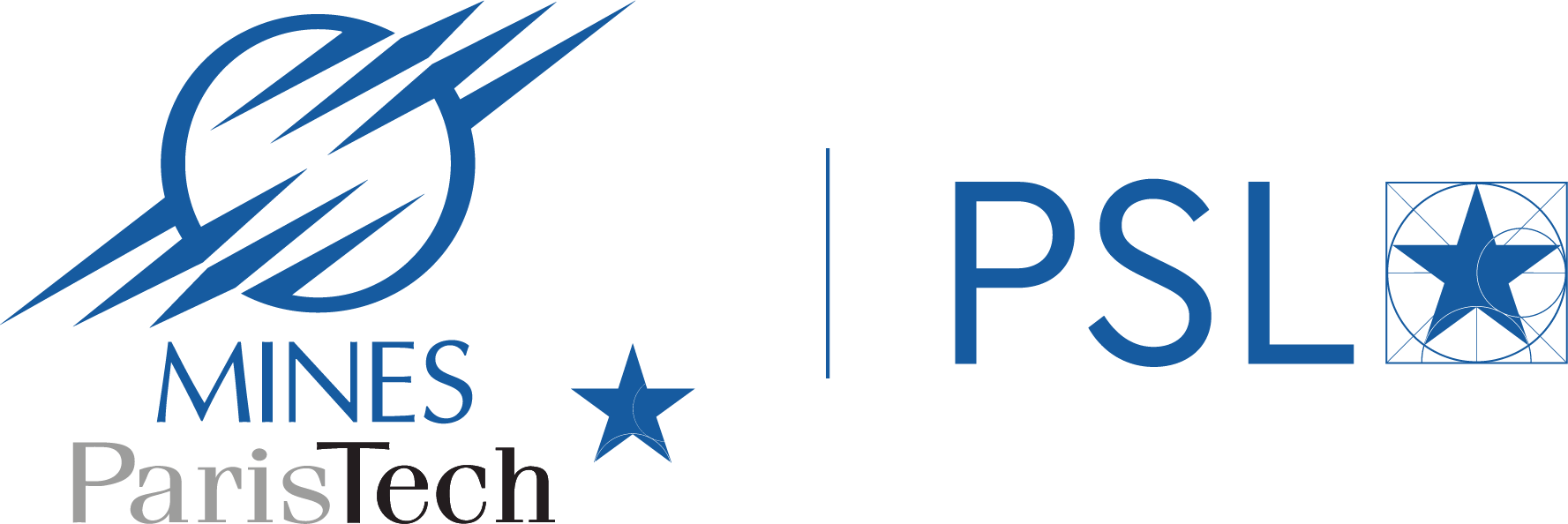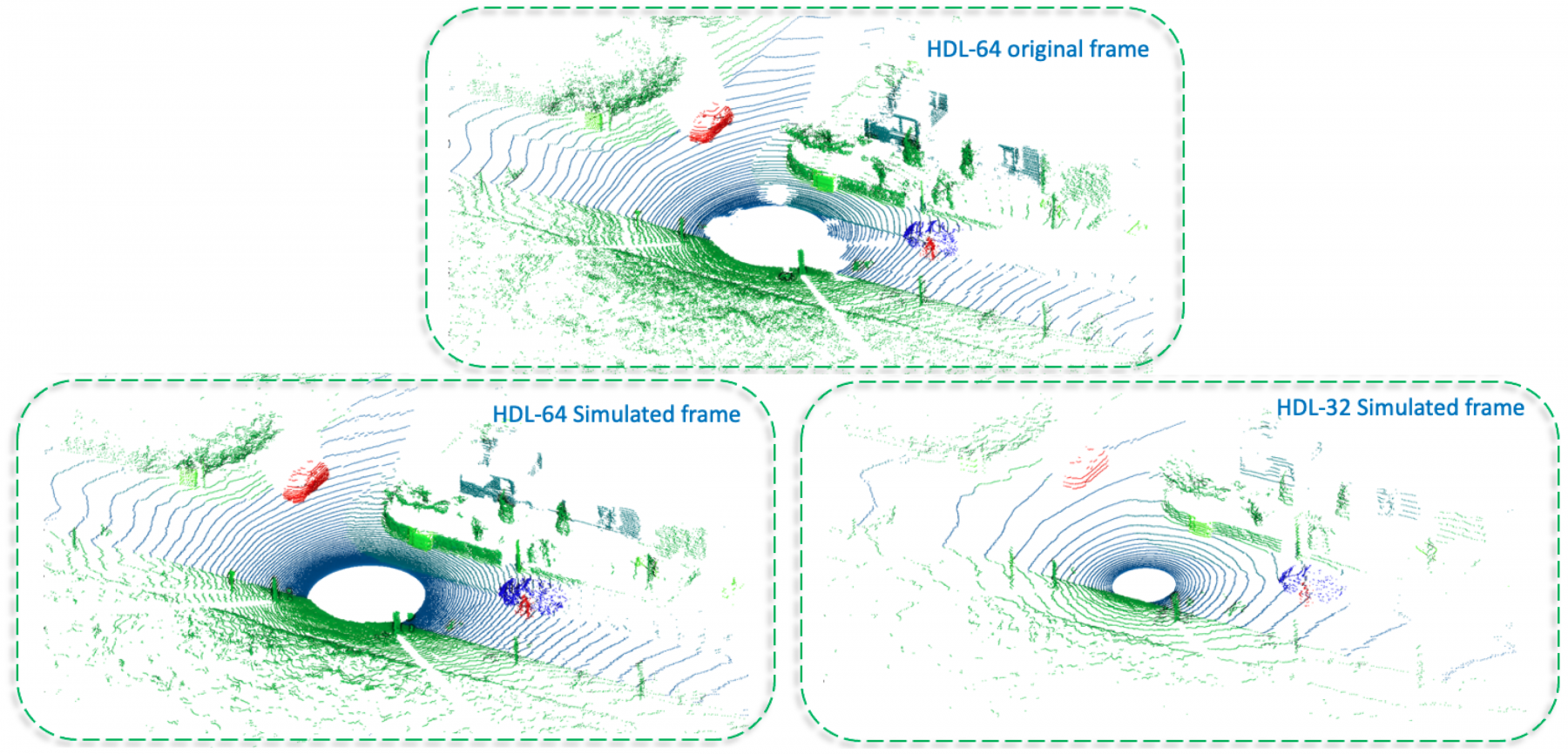SimKITTI32
Password is: npm3d-SimKITTI32
SimKITTI32 is a dataset created simulating a Velodyne HDL-32 inside a scene modeled from the SemanticKITTI dataset (acquired using a Velodyne HDL-64).
The virtual environment was modeled using our AdaSplats method, which stands for adaptive splatting and includes a high-quality scene modeling algorithm.
The goal from the dataset is to test sensor domain generalization of 3D semantic segmentation methods in the same environment, which tests if a method designed to semantically segment point clouds acquired using one sensor, e.g., a Velodyne HDL-64, can generalize to point clouds acquired using another sensor, e.g., a Velodyne HDL-32.
An interesting point with this simulated dataset is that we were able to simulate semantic data up to 80m whereas in SemanticKITTI the data is annotated up to 50m.
We simulated the HDL-32 sensor inside the modeled scene of sequence 08 in the SemanticKITTI dataset. We use this sequence because it is used as validation sequence for 3D semantic segmentation methods. The trajectory used has an offset (0.0m,0.0m,-0.5m) compared to the original trajectory to generate data from a different point of view.
The Velodyne HDL-64 was also simulated on all sequences from 00 to 10, to allow comparison of the original data to simulated data from the same trajectory.
You can find more details about the creation of the modeled virtual scene and the LiDAR simulation in the following article:
Do not forget to cite our article if you use this dataset.
@Article{richa2022adasplats, AUTHOR = {Richa, Jean Pierre and Deschaud, Jean-Emmanuel and Goulette, François and Dalmasso, Nicolas}, TITLE = {AdaSplats: Adaptive Splatting of Point Clouds for Accurate 3D Modeling and Real-Time High-Fidelity LiDAR Simulation}, JOURNAL = {Remote Sensing}, VOLUME = {14}, YEAR = {2022}, NUMBER = {24}, ARTICLE-NUMBER = {6262}, URL = {https://www.mdpi.com/2072-4292/14/24/6262}, ISSN = {2072-4292}, DOI = {10.3390/rs14246262} }
Please also cite the SemanticKITTI dataset on which our dataset is based on:
@INPROCEEDINGS{9010727,
author={Behley, Jens and Garbade, Martin and Milioto, Andres and Quenzel, Jan and Behnke, Sven and Stachniss, Cyrill and Gall, Jürgen},
booktitle={2019 IEEE/CVF International Conference on Computer Vision (ICCV)},
title={SemanticKITTI: A Dataset for Semantic Scene Understanding of LiDAR Sequences},
year={2019},
volume={},
number={},
pages={9296-9306},
doi={10.1109/ICCV.2019.00939}
}And also cite the original KITTI dataset:
@INPROCEEDINGS{6248074,
author={Geiger, Andreas and Lenz, Philip and Urtasun, Raquel},
booktitle={2012 IEEE Conference on Computer Vision and Pattern Recognition},
title={Are we ready for autonomous driving? The KITTI vision benchmark suite},
year={2012},
volume={},
number={},
pages={3354-3361},
doi={10.1109/CVPR.2012.6248074}
}SimKITTI32 dataset is made available under the Creative Commons Attribution Non-Commercial No Derivatives (CC-BY-NC-ND-3.0) License.


